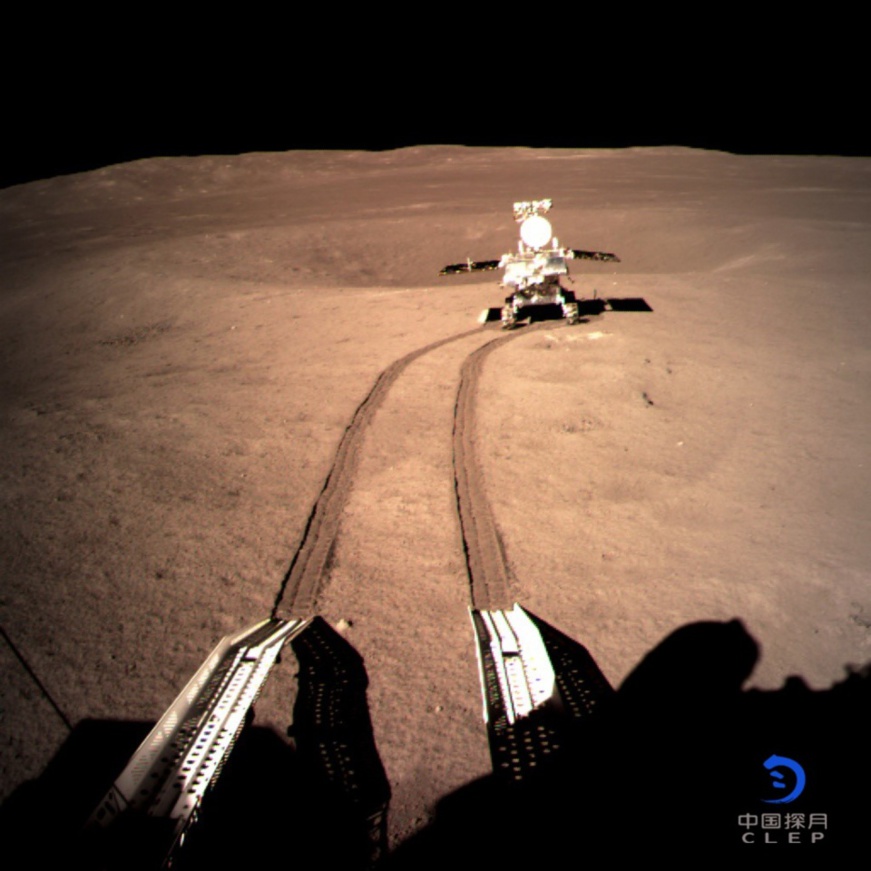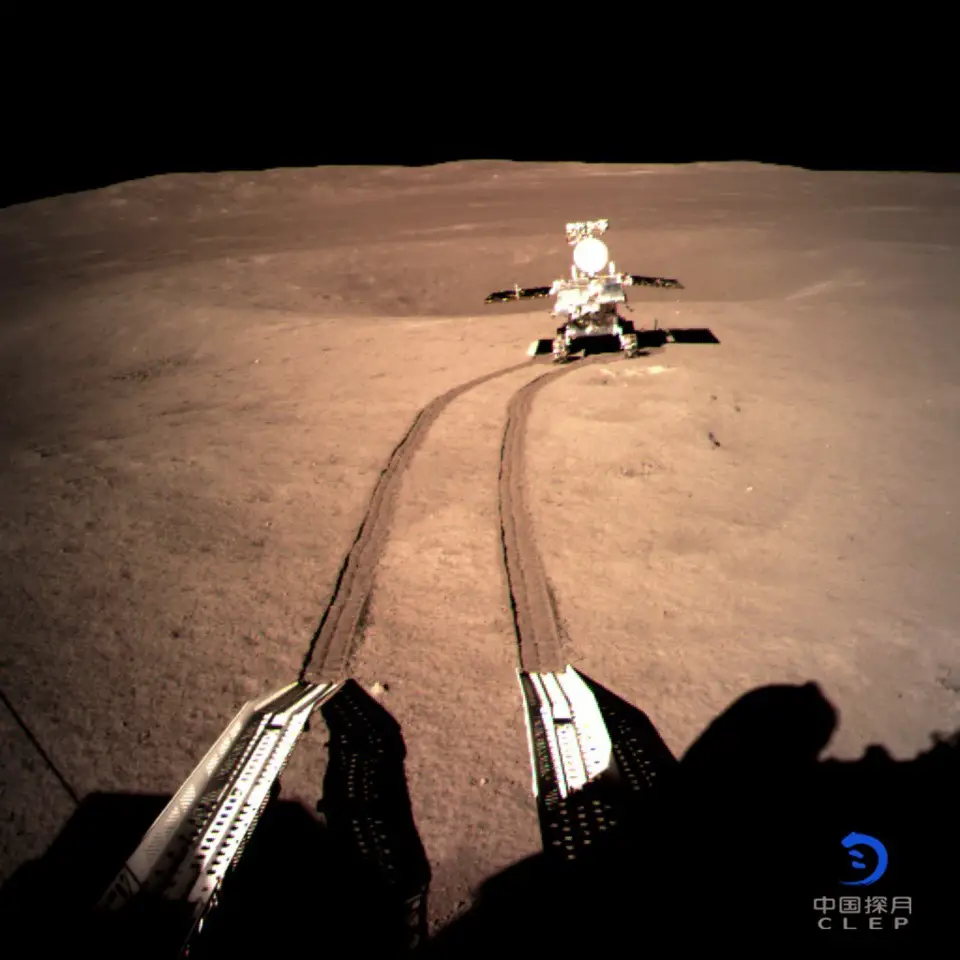By Yang Xun from People’s Daily

China National Space Administration on Jan. 4, 2019 released a photo taken by a camera installed on the lander of the Chang’e-4 probe, revealing the rover Yutu-2 and its traces at the planned landing site. (published by Xinhua, photo by China National Space Administration)
China will launch the Chang’e-5 lunar probe at the end of 2019 to complete the collection and return of samples, said Wu Weiren, member of the National Committee of the Chinese People's Political Consultative Conference (CPPCC).
Wu made the remarks in an interview ahead of the opening of the second session of the 13th CPPCC National Committee on March 3.
Wu, also chief designer of China's lunar exploration program, disclosed that China will also send a probe the next year to orbit, land and explore the Mars.
The Chang’e-4 probe and Yutu-2 rover are of vital significance for the chief designer. The Chang’e-4 probe made the first-ever soft landing on the far side of the moon in human history on Jan. 3, marking a decisive step of the Chang’e-4 lunar mission, and a good start for the lander and the rover to survey the lunar surface.
The rover Yutu-2 separated itself from the lander of Chang’e-4 upon landing, and later switched to dormant mode for the lunar night on Feb. 11 after leaving the first trace from a human spacecraft on the far side of the moon.
When responding to the broadly concerned question that how Yutu-2 was doing on the moon, Wu introduced that there were often 14 days of darkness on the moon owing to its rotation and revolution, thus the temperature could reach as low as minus 190 degrees Celsius at lunar night, a temperature that no electronic component could endure.
There was no better choice than putting the probe and rover into hibernation to ensure their safety at lunar night, he added.
Now the rover has awaked again from the dormant period and gone back to work in good condition, said Wu, adding that it has entered the third lunar week.
Wu told the press that the exploration of the terrain at the landing site was completed, and Yutu-2 was now heading northwest from where it landed.
In the past several months, China has acquired abundant scientific data about the moon, and these lunar data will soon be available in both China and the world, Wu noted.
Aerospace has a history of over 100 years in the world, and 60 years in China. Wu remarked that China has achieved a lot in the past 60 years of aerospace history, but is still far behind the powerful countries in aerospace. Therefore, the country needs to speed up to catch up, he added.
Wu made the remarks in an interview ahead of the opening of the second session of the 13th CPPCC National Committee on March 3.
Wu, also chief designer of China's lunar exploration program, disclosed that China will also send a probe the next year to orbit, land and explore the Mars.
The Chang’e-4 probe and Yutu-2 rover are of vital significance for the chief designer. The Chang’e-4 probe made the first-ever soft landing on the far side of the moon in human history on Jan. 3, marking a decisive step of the Chang’e-4 lunar mission, and a good start for the lander and the rover to survey the lunar surface.
The rover Yutu-2 separated itself from the lander of Chang’e-4 upon landing, and later switched to dormant mode for the lunar night on Feb. 11 after leaving the first trace from a human spacecraft on the far side of the moon.
When responding to the broadly concerned question that how Yutu-2 was doing on the moon, Wu introduced that there were often 14 days of darkness on the moon owing to its rotation and revolution, thus the temperature could reach as low as minus 190 degrees Celsius at lunar night, a temperature that no electronic component could endure.
There was no better choice than putting the probe and rover into hibernation to ensure their safety at lunar night, he added.
Now the rover has awaked again from the dormant period and gone back to work in good condition, said Wu, adding that it has entered the third lunar week.
Wu told the press that the exploration of the terrain at the landing site was completed, and Yutu-2 was now heading northwest from where it landed.
In the past several months, China has acquired abundant scientific data about the moon, and these lunar data will soon be available in both China and the world, Wu noted.
Aerospace has a history of over 100 years in the world, and 60 years in China. Wu remarked that China has achieved a lot in the past 60 years of aerospace history, but is still far behind the powerful countries in aerospace. Therefore, the country needs to speed up to catch up, he added.
 Menu
Menu
 China to launch lunar probe Chang’e-5 in 2019, Mars probe in 2020: CPPCC member
China to launch lunar probe Chang’e-5 in 2019, Mars probe in 2020: CPPCC member
















